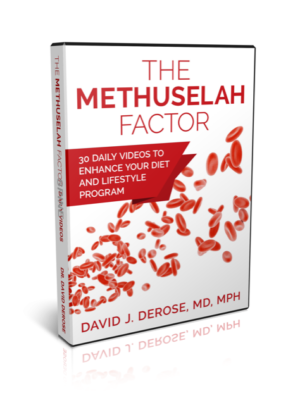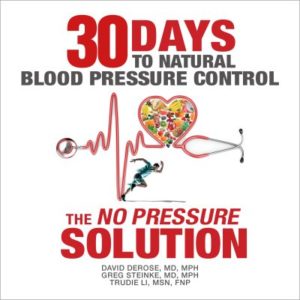Handling Hives
(And Conditions that Can Mimic Hives)-Part I With An Emphasis on Non-Drug Strategies
David J. DeRose, MD, MPH
As presented on the Three Angels Broadcasting Network’s Health for a Lifetime
Taped December 2005
Note: This material is designed to inform and educate. It represents the opinions of the author based on his understanding of current medical research and is not intended to be viewed as a replacement for medical evaluation, advice, diagnosis, or treatment. Because medicine is a constantly changing science that requires professional evaluation, neither the author nor the distributors of this material can take responsibility for any adverse consequences resulting from the application of this information. If the material in this handout disagrees with personalized information provided by your health care professionals, please follow the counsel of those health care providers—not this article.
Hives are a common condition, affecting 20% of the population at some time in their lives. Although most cases are transient, presenting no more than a rare—or occasional—nuisance, some people have chronic debilitating hives. Hives (technically called “urticaria”) typically occur when allergens trigger immune cells known as mast cells and basophils to release inflammatory compounds like histamine. Dietary factors are a common cause of hives and are thus included among the various manifestations of food allergies which affect an estimated 2 percent of the U.S. population.
Although some experts suggest food allergies do not cause chronic problems with hives, if a food is eaten frequently it may theoretically cause or contribute to a chronic hives problem (or other similar skin manifestations). Nonetheless, perhaps as many as one third of those with chronic urticaria appear to have an autoimmune process (the body attacking itself) where the body targets an allergy-triggering mechanism on certain immune cells know as the IgE receptor. Chronic hives may be associated with other autoimmune indicators such as antibodies to the thyroid gland. If a person has undetected low thyroid function (so-called “subclinical hypothyroidism”) thyroid replacement therapy may cause an improvement in the hives as well as helping address some chronic symptoms such as fatigue.
Although medications are sometimes effective for chronic hives, many sufferers would prefer to identify and eliminate the cause of their problems. There are a number of approaches to identifying allergic triggers. However, most boil down to an “elimination strategy” of avoiding many common triggers. If symptoms go away, then the hypothesized triggers are gradually reintroduced, one at a time, to see if the addition of any one of them causes hives. One approach is outlined later in this material.
Other Testing
Sometimes chronic hives may be caused by underlying diseases rather than allergies. One recent review indicated that such internal diseases cause chronic urticaria less than 2% of the time. The same paper suggested that routine laboratory testing for these conditions was of little value, but did indicate several screening test were reasonable including a white blood cell count (with “differential” or quantitation of different types of white blood cells) and the “sedimentation rate.” If the latter test is elevated it indicates a possible underlying inflammatory process. Whether or not a sedimentation rate is ordered as a screening test, other tests may be valuable. These include:
- ANA blood test (for lupus or related disorders)
- Blood antibody testing for chronic hepatitis (both B and C)— do not rely on elevated liver function tests (AST or ALT); check for actual hepatitis antibodies
- Complete blood count (elevated eosinophil count may indicate parasitic infection; elevated red blood cell count may indicate polycythemia vera)
- Evaluation of thyroid function and testing for thyroid antibodies
- Testing for gastrointestinal Helicobacter pylori infection (recent data suggests that eradication of chronic H. pylori infection is associated with a greater likelihood of hives resolution)
Other evaluations may also be warranted such as searching for evidence of fungal infections, parasitic infections, and other causes of chronic underlying processes associated with hives. If doctors have not already tested for physical causes of hives, these generally should be assessed. A number of physical stimuli can trigger hives. These include:
- Pressure
- Vibration
- Sun exposure
- Cold
- Exercise
- Water exposure
- Heat
Clinical Trial for Allergic Triggers
(Recommend for Usage Only Under a Health Professional’s Direction)
A clinical trial for triggers of allergic reactions such as hives generally involves two components: (1) Avoidance of non-food items; (2) Elimination of foods using an elimination diet
(1a.) Non-Food Items to Avoid Entirely:
- Fabric softeners
- Cosmetics
- Jewelry (often contains traces of nickel, a common allergic sensitizer)
- Rubber or latex containing products (barrier contraceptives, rubber gloves, balloons, etc.)
- Any exposure to allergen-containing plants. Examples: poison ivy or poison oak (Note: even small amounts of these allergic plant compounds can trigger skin reactions)
Exposures may include
- Mowing “lawns” containing these noxious weeds
- Sittings where particles of these weeds (often unnoticed) are burned like outside bonfires or indoor wood burning stoves
(1b.) Non-Food Items to Avoid as Specified:
- All but hypoallergenic soaps and laundry detergents (some people report satisfactory results skipping all laundry detergents for a period of time)
- Hot baths or showers (also limit contact with other external sources of water as some cases of hives are triggered by water exposure)
- Occupational exposures
If symptoms resolve when off work for a period of time, search should be made for agents in the workplace that may be causing the skin reaction
If possible, all prescription and over the counter medications
For medications you are currently taking under a doctor’s direction, see if the prescribing physician will allow a trial off the medications
Note: high risk or sensitizing pharmacologic substances include
- Neomycin (common in topical antibiotics)
- Oral antibiotics and antifungal agents
- Benzocaine (common in anti-itch skin products)
- Aspirin
With An Emphasis on Non-Drug Strategies
David J. DeRose, MD, MPH
As presented on the Three Angels Broadcasting Network’s Health for a Lifetime
Taped December 2005
(2) Elimination Diet. A diet that avoids many common—as well as unusual—triggers has been advocated by some experts. Others argue that such diets are not only impractical, but without carefully reading ingredients, contacting food production companies (e.g., to find the source of things such as “natural flavorings;” or to ensure that no traces of forbidden foods may have contaminated food production machinery), etc. no such diet could be efficacious. Despite such concerns, I have seen patients with a variety of conditions improve following elimination diets.
Basic elimination diet strategy. If the problem is not severe and occurs only occasionally, e.g., a few times a month, avoiding only the foods in the Level One column may be the best strategy. This excludes many of the compounds alleged to be the most common offenders, yet is easier to tolerate than the Level Two diet. The Level Two diet may be a better choice if severe and/or daily (or near daily) symptoms are present.
Once symptoms resolve, we often begin adding foods (one new food every other day) starting with asterisked foods in the Level Two column. When all these foods have been added, we typically progress by adding other foods in the Level Two column. Subsequently, the same process is followed with the Level One column. (If a person employed only the Level One diet initially, he/she will first add foods with an asterisk in that column, then progress to other foods excluded during the elimination phase.) If hives recur at any point in the process of adding formerly excluded foods, eliminate the last two foods added and see if the hives resolve. If they do, do not try to reintroduce those two foods for at least three months; even then, only use small quantities—no more than once per week. If any food provokes severe allergic symptoms (such as breathing difficulties, or lip or facial swelling), do not try to reintroduce the food. Such severe allergic manifestations can be life threatening; reintroduction of such foods is usually not warranted—even if it is done under a doctor’s direct supervision.Elimination Diet Food Chart
| Category | Level One | Level Two(Avoid Everything in Level One Plus Everything in this Column) | Items Always Permissible |
| Grains | Wheat and other gluten containing grains:o Barely*o Ryeo Oats* | CornRice* | Millet |
| Nuts, Seeds, and Legumes | All nuts (including peanuts)SoySpecific seeds | o Sesame seeds o Poppy seedsAll other legumes* | Seeds not listed at left |
| Dairy and Eggs | Milk and other dairy productsEggs | N/A | None |
| Other animal products | FishChickenRed Meat and all other flesh foods (tend to favor inflammation) | None | |
| Fruits | BerriesCitrusBananas*KiwiFruits with high likelihood of pesticide residues | o Grapes*Fruits that can cross react with ragweed pollen sensitivity:o Watermelono Cantaloupeo HoneydewFruits that can cross react with birch pollen sensitivity:o Appleo Cherries | ApplesPearsStone fruitso peacheso plumso nectarines |
| Vegetables | N/A | Vegetables that can cross react with birch pollen sensitivity:o Carrot*Nightshades:o Tomatoeso Potatoeso Egg planto peppers | Vegetables not listed at left |
* = foods to be added before others in the same column if the elimination diet is effective
| Category | Level One | Level Two(Avoid Everything in Level One Plus Everything in this Column) | Items Always Permissible |
| Water | N/A | Everything but distilled water (coupled with charcoal pre-filtration) | Distilled water |
| Other | ChocolateYeasto Nutritional yeasto leavening yeast*Alcoholic beveragesSelected flavorings, preservatives and colorings:o Tartrazine (yellow dye)o Sodium metabisulfiteo monosodium glutamateo nitriteso cinnamon | All herbs, vitamins other and supplementsAll other artificial flavorings, preservatives, and coloringsAdded salt (alternately can limit salt to 1000 mg per day)CaffeineHot spices | N/A |
* = foods to be added before others in the same column if the elimination diet is effective
Note: Although the Level Two diet excludes all herbs and supplements, some choose to use anti-inflammatory plant products in conjunction with either Level One or Level Two Elimination Diets. These include:
(1) Using plant oil supplements and other oil rich agents:
Flaxseed oil one to two tablespoons (or three capsules) three times daily with meals
Gamma linolenic acid (GLA) 2 capsules three times daily to deliver approximately 1500 mg daily (may come from black currant, borage, or evening primrose)
(2) Using anti-inflammatory herbs:
Turmeric: 500 mg three times per day
Ginger : 250 – 500 mg two to three times daily
(3) Using other supplements:
Vitamin E: 400 IU twice daily




